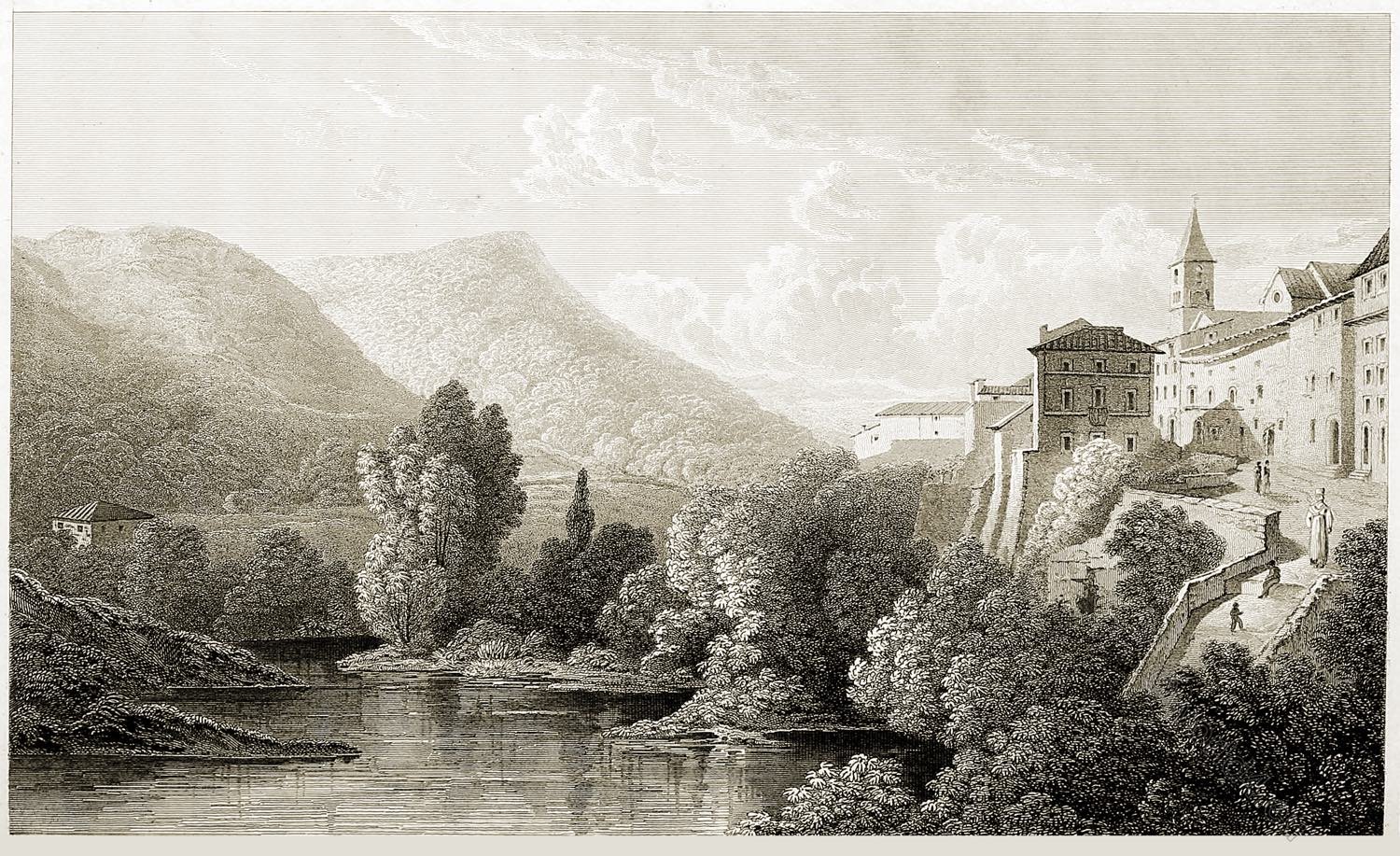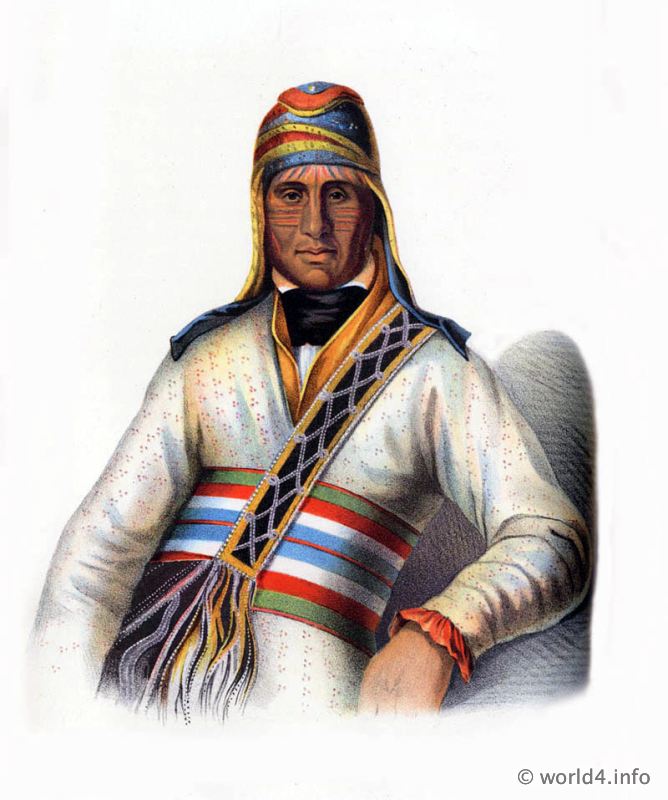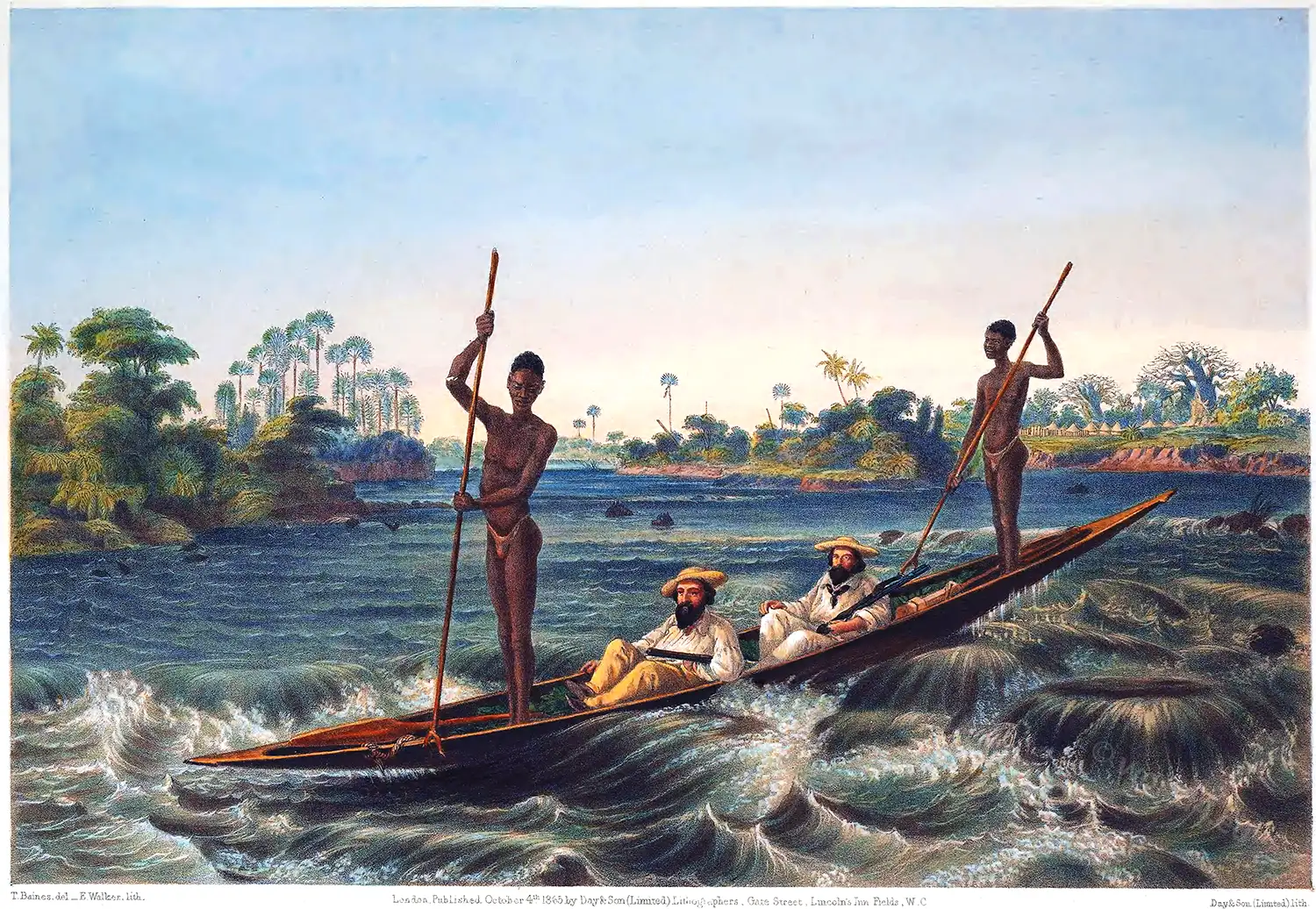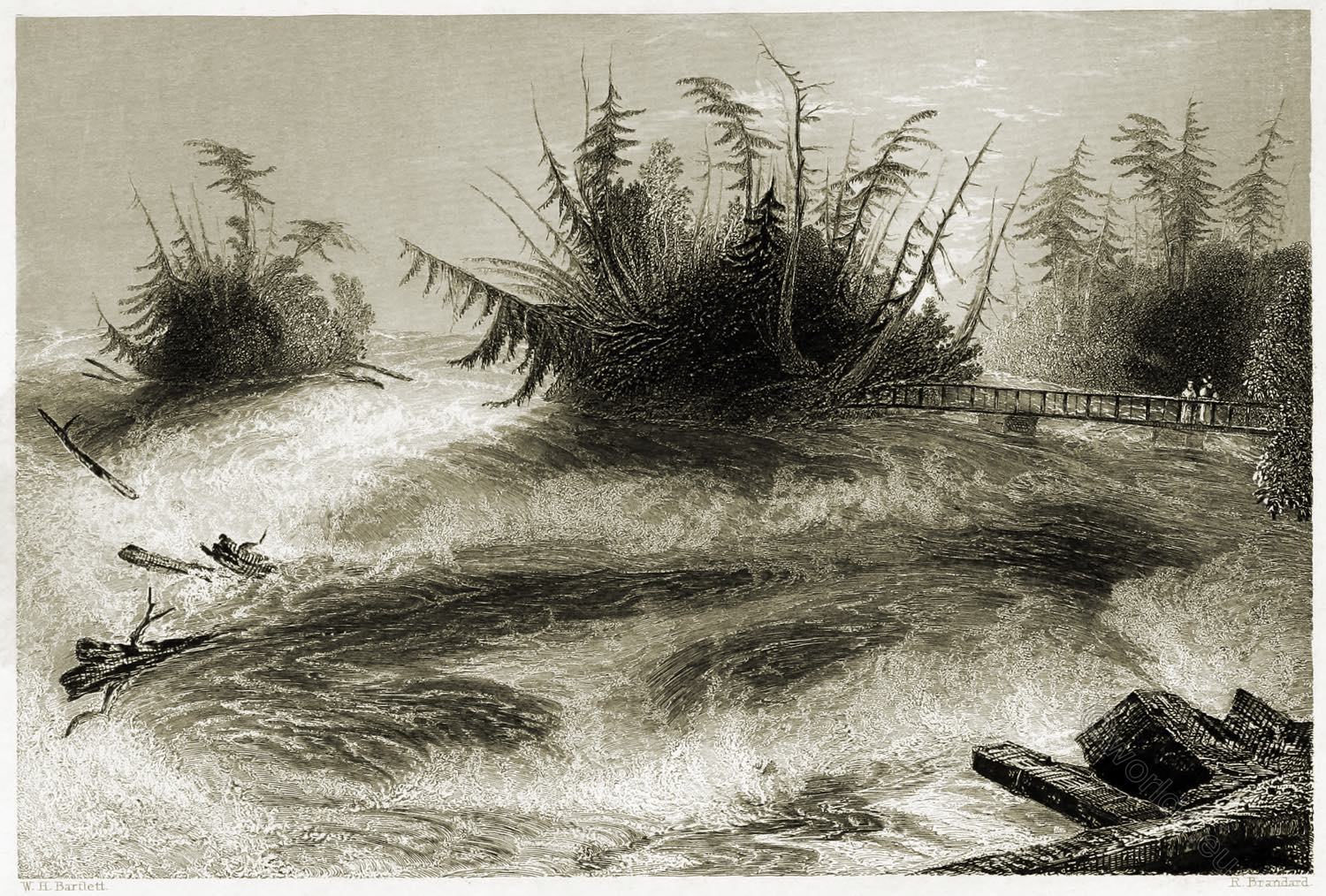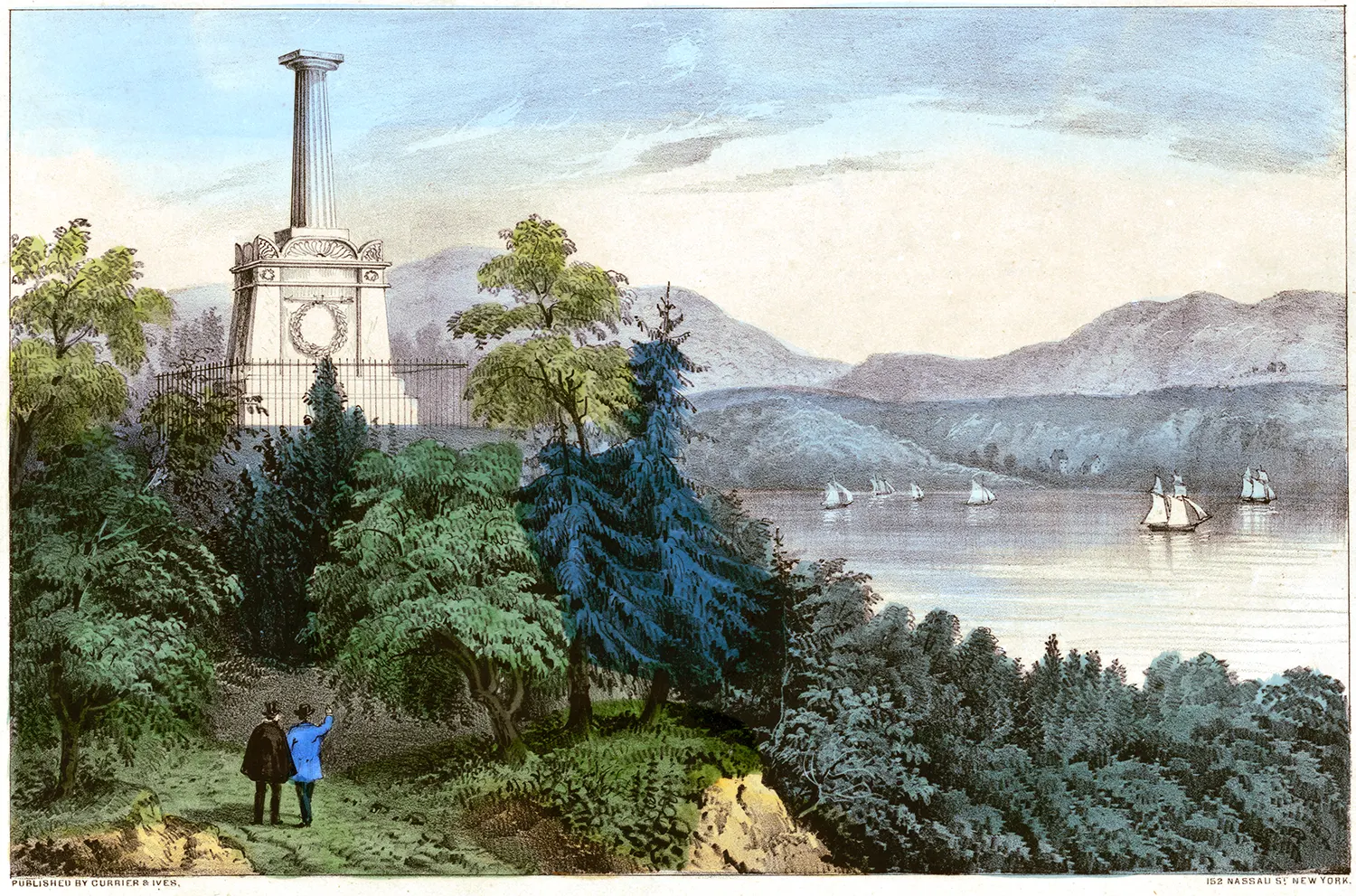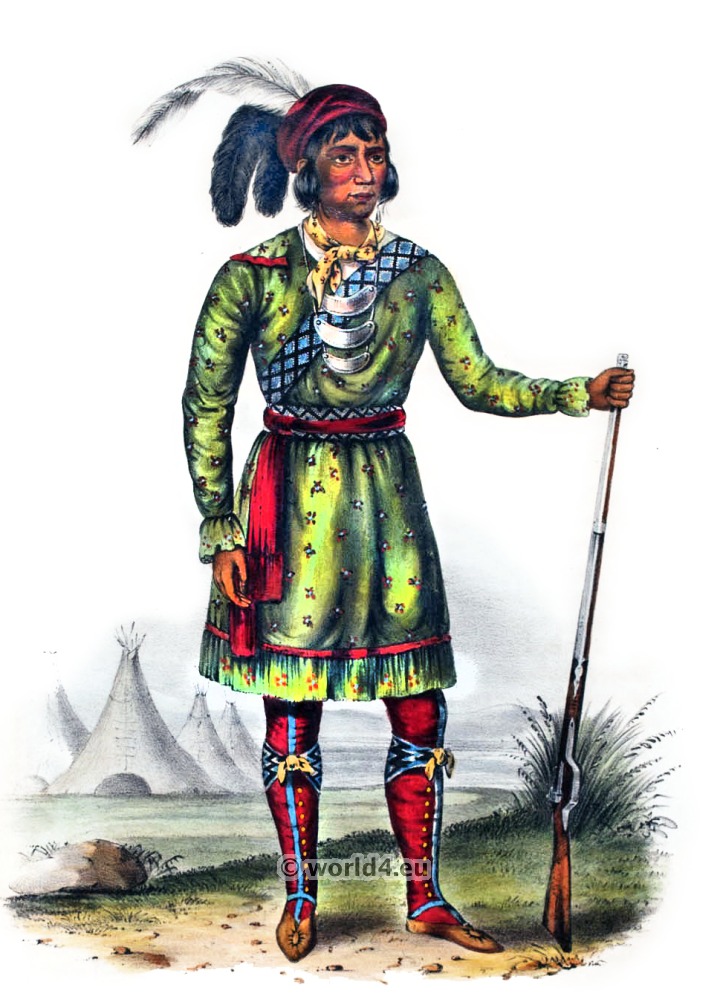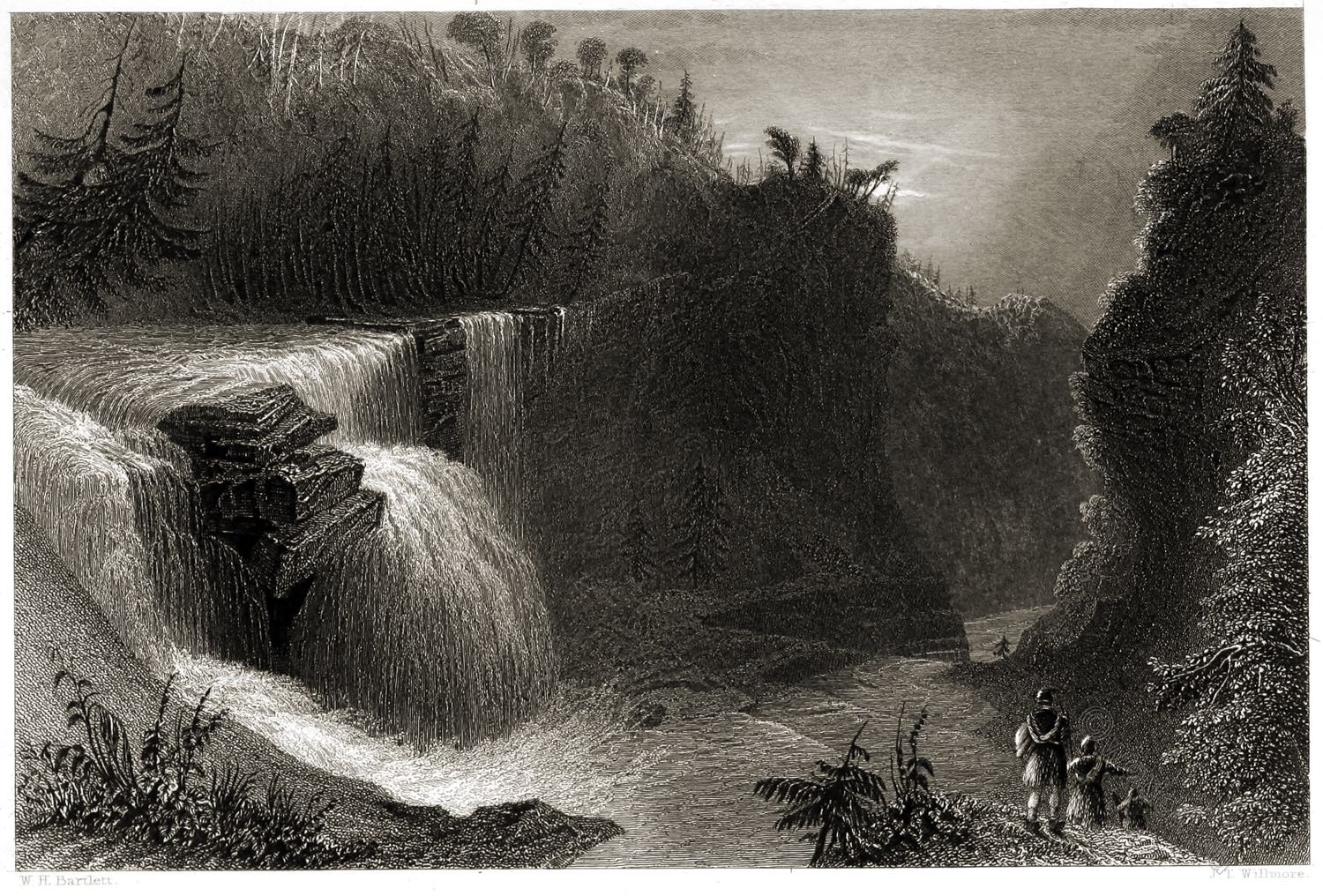
TRENTON FALLS. (VIEW DOWN THE RAVINE.)
Trenton Falls (called Cayoharie by the Indians) are formed by the descent of a considerable stream, known by the name of West Canada Creek, through a mountainous ravine of singular formation and beauty. The Creek, which is swollen to a tremendous torrent by rains in the mountains, or by the spring thaws, has evidently worn through the strata which now enclose it, and runs at present over a succession of flat platforms, descending by leaps of forty or fifty feet from one to the other, and forming the most lovely chain of cascades for a length of three or four hundred miles. The walls that shut it in are either perpendicular, or overhanging it in broad table ledges; the wild vegetation of the forest above, leaning over the chasm with an effect like foliage of a bright translucent green, painted on the sky.
Although but fourteen miles distant from a town containing twelve or fourteen thousand inhabitants, Trenton Falls were unknown till within a very few years. They were discovered by an artist in search of the picturesque, and are now visited, like Niagara and Terni. A quiet but excellent inn, which contrasts strongly, by its respectful service, and its neat and secluded air, with the noisy and carelessly kept hotels of the country, stands on the edge of the pine forest, a little back from the brink of the chasm; and being off the business line of travel, and requiring a little time and expense to reach, it is frequented principally by the better class of travelers, and forms a most agreeable loitering-place, either for the invalid, or the lover of quiet leisure.

In company with the artist to whom the public is indebted for these admirable drawings, I lately visited the ravine by moonlight. We had passed the day in rambling up and down the creek, (a term, by the way, that, differing from its use in England, describes usually in America the finer class of streams;) and I had already made myself familiar by many visits in former years with every turn and phase of its matchless waters, as seen by the light of day. The moon rose about ten, and lifted her perfect orb, without a mist or a cloud, over the shoulder of the mountain which turns the outlet of the ravine. The fine and majestic wood, through which winds the narrow footpath to the Falls, let in the white light in silvery and broken masses—sometimes sliding a long argent line down the dark body of a pine, sometimes pouring in upon the horizontal branches of the hem- lock, like an open hand sprinkled with snow ; and here and there lighting up a broad circle upon the carpet of tassels and dead leaves, which, in contrast with the heavy shadows of the surrounding wood, looked illuminated with the special brightness of a fairy ring.
We descended the long ladder leading into the ravine, and were soon below the reach of the moonlight, which came slant as yet, and only rimmed the black wall above us with a long strip of white, which, where the wavy line of moss and creepers ran into it, resembled the edging of lace upon a velvet coat in a dark old Flemish picture. The water in this part of the gulf quite fills up the chasm, and rolls, even by daylight, in a black and sullen stream between the bare cliffs which frown over it. The only path here is a giddy ledge, half way up the precipice, which is passed with the aid of a chain run along the rock; and, as we stood on this, looking over into the uncertain darkness below, with the murmur of the far-down and invisible current ascending faintly to our ears, and the light of heaven ceasing so far above us, it seemed to us not an inapt image of the infernal river. We crept on till we came to the foot of the principal Fall, and sat down on the platform below, to wait the gradual descent of the moon.
The mist over the Fall began to show like a film of gauze waving in the air the sharp angles and crevices in the precipice caught the light one by one, and soon the whole upper ravine was illuminated, while through the gorge below the stream still made its way darkly and solemnly to the outlet.
No pencil, no language, can describe the splendor with which the moon drew her light across the face of the Fall. The other objects in the ravine drank her beams soberly, and gave back only their own calm outlines to the eye but, from this wall of waters, every spray-drop gave back a diamond—every column of the descending element, a pillar of silver. If there were gates to fairy-land opening from this world of ours, and times when they are visible and recognizable by the chance passing eye of man, I should have believed that we had fallen on the hour, and that some inner and slowly opening portal was letting the brightness of a fairy world through these curtains of crystal.
Source: American Scenery; or, Land, Lake, and River Illustrations of Transatlantic Nature. From Drawings by W. H. Bartlett. Engraved by R. Wallis, J. Cousen, Willmore, Brandard, Adlard, Richardson, &c. The Literary Department By N. P. Willis, Esq. London: George Virtue 26, Ivy Lane. 1840.
Related

Discover more from World4 Costume Culture History
Subscribe to get the latest posts sent to your email.

